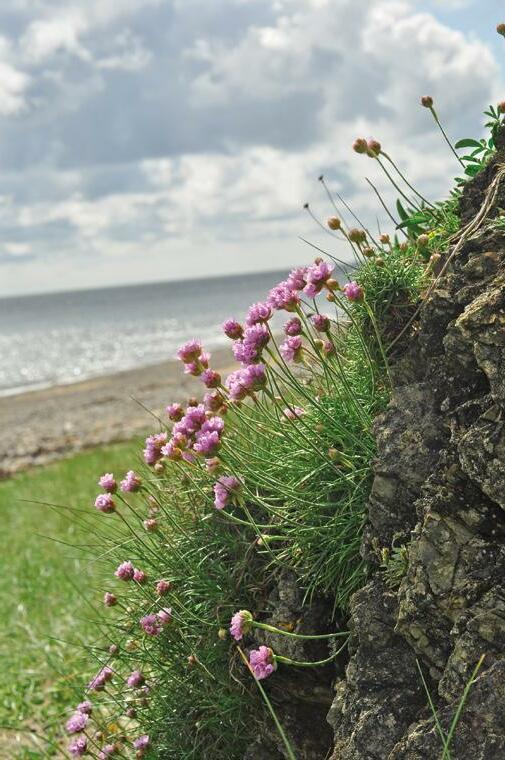
23 minute read
Discovering our wonderful wildflowers
Zoe Devlin explains where you can find our vast array of wildflowers and how you can recognise them
Thrift

As spring begins to make its gentle transformation into summer, June is the very best time to look out for some of those treasures of the hedgerows and roadsides – the wildflowers. Once you get into the habit of looking out for these gems, there can be an enormous amount of pleasure to be gained by observing and identifying them. No fancy equipment is needed other than a good pair of walking shoes and, if you find yourself being drawn in to this absorbing hobby, a small hand lens is a most useful tool for examining the delicate features of the flowers and leaves; and of course, a little field guide to Irish wildflowers might come in handy too.
Ireland is a nature-lover’s paradise with many different habitats from woodland to coastal, bogland to meadows, limestone and heath, each with its own particular assortment of plant species.
In early summer, a walk in a deciduous woodland can be most rewarding, the fresh, newly-emerged leaves creating a bright green canopy, high above the forest floor. At the woodland margins, curving, thorny branches of the native Dog-rose bear pink and white blossoms in small groups, the five petals of each flower surrounding a cluster of yellow stamens and a conical tuft of stigmas that, later on in the autumn will lead to the production of bright scarlet ‘hips’. Honeysuckle (AKA Woodbine) begins to twine itself over other vegetation, helping diverse parts of nature as it grows. Its flowers help to feed the bees with sweet, sugary nectar and when they have finished blooming the plants will produce red berries that are devoured by visiting robins, song thrushes, blackbirds and bullfinches. The flowers also have a pleasant aroma that attracts night-flying moths in search of nectar. of pinky-purple bell-shaped flowers in both deciduous and coniferous woodland; this species is also known, in some parts, as Fairy Thimbles. Also on the borders of the woodland, a little beauty with small, deep-blue flowers demands to be examined more closely. This is Germander Speedwell, just one of a number of speedwells that are native to Ireland. Each flower in the speedwell family has four petals – a matching pair on either side and a large upper petal with a smaller one below. Dark blue lines run into the centre of each flower, helping to guide tiny insects towards the nectar. Wandering through some of our old woodlands, it is quite common to come across the remains of old walls and abandoned dwellings with ferns and mosses growing over them in profusion. These relics of the past also offer tiny footholds for another native – Navelwort (AKA Pennywort). It has erect spikes of greenish-white tubular flowers but it is the leaves that help to identify the plant. Each has a small dimple at the centre – a little like a tummy-button, hence its

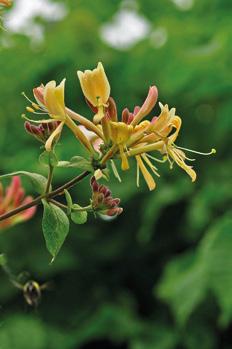
Honeysuckle
Dog Rose
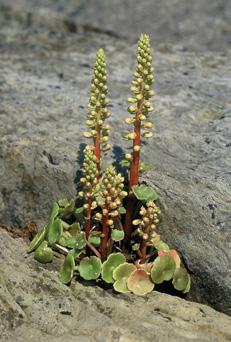

Navel Wort Sea Bindweed
common name. Perhaps the best known and best loved woodland species is the native Bluebell, each with between four and fifteen, drooping, tubular, bluepurple flowers on the inner side of a gracefully curving stem. Each flower is narrow, with six backward curving lobes and cream anthers and these features help to differentiate it from the non-native bluebells often found in public parks and gardens. Those plants tend to be erect with the flowers sprouting from all sides of the upright stem and each flower shows blue anthers within a far wider and more open flower than the native Bluebell.

Coastal plants have one thing in common – their fleshy leaves. Modified over time so that the harsh sea winds and sand don’t destroy them, seaside plants are quite different to those found in woodland. A typical coastal species, Sea Bindweed grows really low to the ground, creeping along shingle and sand on long, underground runners. It has pink, trumpet-shaped flowers with a white 5-pointed star-shape emerging and spreading outward from the centre. Its shiny, thick leaves are kidney-shaped. One pretty, very tough little seaside plant is Thrift, a species that readers of my vintage may remember adorned one face of the twelve-sided threepenny piece of our neighbouring island. Thrift shows its head of pink, papery flowers from the end of April, it is hardy and stays in bloom right through July. It grows in clumps with long, skinny, grey-green leaves that curl around the bottom of the flower stems. In saltmarshes and on cliffs, a member of the daisy family that closely resembles the garden plant, Michaelmas Daisy, exhibits violet-blue flowers with deep yellow centres. This is Sea Aster and it seems to thrive in the most demanding conditions of its habitat, whether with its feet wet twice daily by the tide at the edge of the marsh or with scarcely a foothold on a cliffside. One of my own seaside favourites is the Sand Pansy, a small yellow and white cousin of garden pansies. It loves to grow – as its name might suggest – on sand dunes. Damp, boggy areas are home to a group of plant species that is known as ‘carnivorous’. Because the soil is extremely poor in nutrients in bogland, these plants have had to find another way to get their food. Over millennia they have modified their leaves and these leaves bear hairs, each tipped with a little drop of sticky ‘dew’. When a tiny insect lands on a leaf, he or she gets stuck fast and the leaf rolls over, trapping them completely before going on to digest them. Not much is left – just a husk to blow away in the wind. Among these carnivorous plants is the particularly beautiful Large-flowered Butterwort. Found mainly close to the lakes of West Cork or in the mountain valleys of Kerry, in June it is a stunning sight that really demands close scrutiny. Each deep purple flower has a white throat adorned with black lines and white fluffy threads. The flowers are held high enough to ensure that they won’t get stuck to the leaves. In order to search out some of the bogland beauties, could I suggest that the shoes be exchanged for wellies and a couple of trek poles can be a useful means of support on quaky ground. Heathers are commonly found in bogland and one of these – Cross-leaved Heath – grows on quite wet, waterlogged ground where it raises round drooping, pink to magenta bell-shaped flowers on wiry stems right through to October. Narrow, needle-like leaves growing in whorls of four along the thin stems help with the identification. Some of the most magnificent jewels of


DIGITA SKILLS DIGITA SKILLS L L
Fo Fo r r ev ev eryday eryday li li v v i i ng ng



National rollout of free, in-person Hi Digital classes for older peopl National rollout of free, in-person Hi Digital classes for older peopl e. e.
From May 2022, Active Retirement Ireland' s Fromfree, iMayn-pe2022, Active Retirement Irelandrson Hi Digital classes for older ' s free, in-personpeople roll out Hi Digitalacross thcelasses forcountry. older people roll out across the country. A first of its kind, five-year initiative, Hi Digital A first ofwas devits kindeloped, fivbye-year initiative, HiVodafone Ireland Digital was developed by Vodafone IFoundation alongside charityrelandpartners, FoundActiveation alongside charityRetirement Ireland andpartners,ALONE, to ActivesuppoRetirementrt older peoIrelpleandwhoand ALONE,lack digitaltoskills, supportthrougholder peoponline andle whoin-perlackson tdigital sraining. kills, through online and in-person training. Classes are open to any person Classagedes are open to any per65+ who would like to son a dged 65evelop+ whtheiro woulddigital lilike toteracy and develop theirconfidence wdigital literacy andith guidance and confidence wsupport fromith guidance andother older people in support from othertheir community. older people in their community.
C C om om mu mu n nity ity -le -led d t t rairai n ni i n n g g Sign up for Active Retirement Ireland’s Hi Digital classes for older people and learn basic and essential online skills. Sign up for Active Retirement Ireland’s Hi Digital classes for older people and learn basic and essential online skills.
The Hi Digital training course consists of bite-sized ThelessHionDigital training cours organised aroundse ckeyonsistsdigital of bite-themessized lessons organised arounincluding internet basicsd key digiand howtalto thusemese online including indevices, as ternet basics and hwell as digital appsowantod fuse onlieaturesnesuch as devices,social mas welledia oras digital appsvideo calling thand features such asat can enhance daily social media orlife and combatvideo calling that can enhance daiisolation. Topics covered include: ly life and combat isolation. Topics covered include:
Sending emails
SendingKeeping emailsin touch with friends and family through
Keepingsocial min touch withedia or videofriendscalling and family through socialOnlinemedia orbanking video callingand government services online
Online banLooking upking and government seinformation for hobbiesrviorces ontravel line
Looking uUsing thep informinternetation foron your hobbiephone s or travel
UsUsining g theyouinternetr phone on youto taker phoneand share pictures or
Using youvideos r phone to take and share pictures or videosOnline safety and more.
Online safety and more.
Active Retirement Ireland’s comprehensive programme Active Retirementof in-person classIrelanroomd’s comprehensive programmelearning is delivered through a of in-person classroom learning isnetwork of community partners acdelivereross thed througcountry. h a networkClasses of commuare run bynity partners across the country.trained ARI digital ambassadors who Classes aoffer faceretorun by trained ARIface training anddigital ambaguidance sossadors whoolder people offer facecan develtoopfacetheirtrainiskillsngin and guida relaxedance so older peopand supportive le canenvidevelop tronment. heir skills in a relaxed and supportive environment.
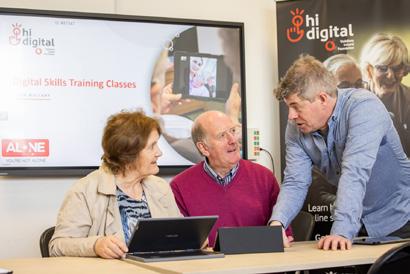
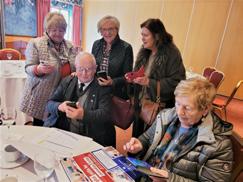
To find out about Hi Digital classes in To find outyour countabout Hiy and boDiokgital classesyour place, in your countcall Active y andRetirebookment your placeIreland on , call180Ac02tive Ret03030ireormentvisit Ireland on 1800203030 or visitwww.activeirl.ie/hidigital
www.activeirl.ie/hidigital
bogland are the orchids. These are not the easiest to identify and they also hybridise occasionally which doesn’t really help, but don’t let that put you off examining them, even if only for their beauty. The two most common from May to July are the Spotted-orchids. The extremely variable Heath Spotted-orchid likes to grow in peaty or acid soil where it displays small, elaborately decorated flowers in varying shades from pale lilac through to purple.
These are borne in erect spikes on stems that are sheathed by narrow, lanceolate, dark-spotted leaves, while its lower leaves are larger and broader. Common Spottedorchid prefers fens, marshes and neutral or calcareous soil, roadsides and damp meadows. Superficially quite similar to the Heath Spotted-orchid, the simplest way of telling them apart is to examine the lower lips of the flowers. In Heath Spotted-orchid, it is wide, frilly and has a small central lobe whereas in Common Spotted-orchid, the lower lip has three lobes with the central lobe jutting out prominently. Finding either is always a thrill.
Meadows are hard to beat, especially on a bright summer day when there is a slight breeze and the flowers seem to be dancing in the sunlight. Aptly named Meadow Buttercup holds its head high, tossing its stems of shiny yellow flowers and feathery leaves in the gentle summer air. Oxeye Daisies (AKA Dog Daisies) are larger versions of the little daisies that grow on garden lawns with a large circle of white ‘petals’ (botanically known as ‘ray florets’) around a spherical clump of tiny yellow ‘disc florets’. At the base of the flower stem, dark green, spoonshaped leaves form a rosette and there are more ornate leaves further up. The word ‘daisy’ comes from Old English ‘day’s eye’ because the flowers open up as the sun rises.
But it’s not always necessary to travel far around Ireland in order to come across wildflowers. One of my own preferred habitats for finding new treasures is, believe it or not, on waste ground. Scarlet Pimpernel, Field Forget-me-not, Common Field-speedwell, Garlic Mustard and many other flowering plants pop up when the soil has been disturbed and it is always worth a glance as you pass by. Even the cracks in the pavement can bring surprises; all it needs is to keep an eye out and you may be delighted by some find – new to you if not to plant science! For help with identification, may I


Scarlet Pimpernel Common Field Speedwell
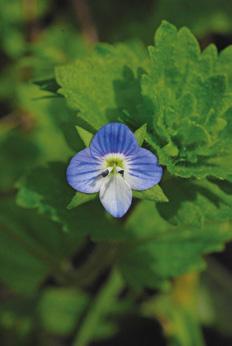
suggest ‘The Wildflowers of Ireland – A Field Guide (Second edition)’ available from all good bookshops.
Three copies of The Wildflowers of Ireland – A Field Guide To be won!
Senior Times, in association with the publishers, Gill Books, are offering three copies of Zoe Devlin’s magnificent book in this competition.
To enter, simply answer this question: What is the other name for Honeysuckle?
Send your entries to Wild Flower Competition, Senior Times, PO Box 13215, Rathmines, Dublin 6. Or email: john@slp.ie The first three correct entries drawn are the winners. Deadline for receipt of entires is 28th June 2022.
Why Leave A Legacy to the Irish Red Cross?

The Irish Red Cross is a proud member of the international network of Red Cross Societies which coordinate over 14 million volunteers worldwide working to provide assistance to those in need in 192 countries throughout the world.
In the context of the crisis in Ukraine, this inter-connectivity enables the Irish Red Cross to provide direct support to their partners within the Ukraine Red Cross as well as national Red Cross Societies in Poland, Hungary, Slovakia, Moldova and Romania.
Since the start of the conflict on February 24, Red Cross volunteers have reached hundreds of thousands of people throughout Ukraine and the surrounding region with lifesaving aid.
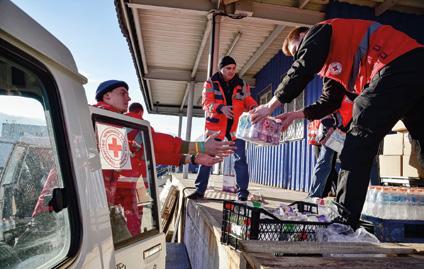
“Many of our staff and volunteers are also experiencing the conflict first-hand. They are worried about their families and their safety, and yet they continue to put on the Red Cross vest to deliver critical aid to neighbours and strangers alike. This is the true spirit of the principle of volunteerism upon which the Red Cross is based.” - Maksym Dotsenko, Director General at Ukrainian Red Cross.
Since the conflict started, 6,000 new volunteers, among them teachers and medical professionals, have joined the Ukrainian Red Cross. In Ireland, Irish Red Cross volunteers are providing a welcome, assistance and coordination to those arriving in the country at our ports and airports. immediate necessities such as clothes and hygiene items. The Irish Red Cross has also played a key role in the coordination of temporary accommodation for Ukrainians through its appeal to the Irish public to share their homes and properties.
Why leave a legacy to the Irish Red Cross?
As a humanitarian organization that act as first-responders in times of crisis, it is so important that the Irish Red Cross are able to mobilise their volunteers to provide life-saving aid to people in their most vulnerable moments, as and when it is needed. Legacy gifts are a special kind of support as they allow us to respond quickly, with urgency and in the most efficient and appropriate manner. Ultimately, it provides the ability to have the greatest possible impact to some of the most vulnerable people in Ireland and around the world.

Please consider leaving a gift in your will to the Irish Red Cross so that they can remain prepared to respond with humanitarian aid in times of terrible conflict and disaster.
Hear from Edwin, an Irish Red Cross supporter who decided to leave us a legacy gift.
“I have always been lucky. I earned enough money to live a comfortable life. I travelled, both for work and for leisure. Generally, I went to places that reinforced my sense of my selfworth. I felt I deserved my good fortune. But, as time went by, I could no longer fool myself.
It is obvious that we live in an unequal world. What I take for granted: education, work opportunities, a place to live, time for enjoyment, even the shirt on my back, are unimaginable luxuries to those for whom fate has decreed that they be born in a very different world. In the 21st century, with the advance of technology, it should be possible to share resources across the planet. Maybe that will happen in time. Future generations, wiser than mine, may grasp the nettle and cut through the political barriers.
Until then, it may seem impossible for any individual to make a difference to the inequity around us.
Fortunately, however, some people are already tackling the problem. The Irish Red Cross, with its associate organisations, has, for many years, been present in areas of conflict, disease and natural catastrophe, lending comfort, medical assistance and funds to whoever needs it most. I seem always to have been aware of the Red Cross, with its distinctive logo. If I can help their efforts, I am proud to do so.
My own contribution is probably miniscule, compared to the overall need, but I do believe that every effort should be made. Above all, I trust the Irish Red Cross to use my contribution effectively and efficiently.
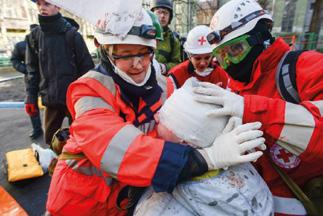
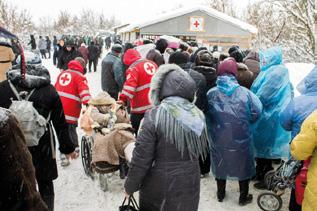
Legacy gifts are a remarkable choice and the Irish Red Cross is grateful to anyone who leaves a gift, large or small. Human tragedies occur. We know that we are far from a world with no conflict or disasters, natural or man-made. In Ireland, growing social isolation amongst vulnerable groups mean more people are likely to need our help. And the Irish Red Cross will always be there. That responsibility has been with us for over 70 years and it will be with us in the years to come.
Call or email the Irish Red Cross to avail of a Free will-making service
For more information on leaving a gift in your will to the Irish Red Cross, call legacy lead Frank on 01 642 4645 for a confidential conversation, or email at fphelan@redcross.ie.
Sunway travel promotion
Escorted tours for all tastes and interests
Malta and Gozo is one of the popular destinations
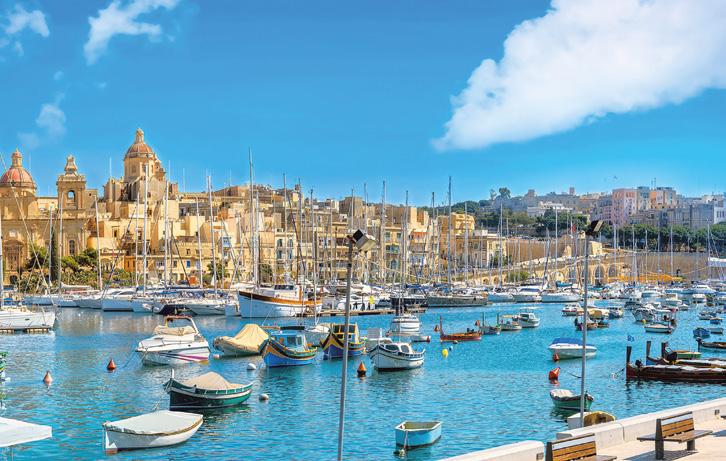
Experience travel in an incredible way with Sunway’s New Escorted Tour program in conjunction with Mackin Tours. Sunway has newly launched 10 tours that allow you not only to visit a country but immerse yourself in it with people who know it well and can share their insights and experience. Sunway can really take you inside the country and step into the highlights. Learn about history and the culture of Europe’s finest ancient cities.
Maybe visit a farmhouse restaurant in Transylvania where the farmer makes his own wine and brandy. Visit a monastery in the Fruska Gora National Park – Serbia’s oldest national park where grapes were first planted in AD 3 by the Romans. If you enjoyed The Sound of Music, you will love to visit the church near Salzburg where the wedding took place. You will be fascinated by Plovdiv, Europe’s oldest continuously inhabited city, even older than Rome.
The majority of the tours are all led personally by the experienced and knowledgeable Frank Mackin. The hardest part of these tours is choosing which one to go on. Hotels, transport and some meals are included so you don’t have to think about it. Our expert guides will show you the highlights and immersive excursions with authentic experiences that highlight the local history and culture. Enjoy Europe’s iconic attractions with VIP passes, hotels, and transportation taken care of plus get under-the-radar insights, not typically available to independent travellers. Whether you’re traveling solo, with a partner or a group of friends our new escorted tours offer a range of fascinating and unique experiences that really bring each destination to life. Here is an example of what we can offer:


Malta & Gozo Tour – From €1199pp Departs 06th June – 9 Nights / 10 Days
Bonnie Scotland & Lake District Tours – From €599pp Departure Date 25th August – 4 Nights / 5 Days
Donegal, Belfast & Antrim Coast Tours – From €399pp Departure Dates 18th July & 04th October – 3 Nights / 4 Days
Serbia, Hungary & Croatia Tour – From €899pp Departs 07th September – 9 Nights / 10 Days
Austria Alpine Splendour Tour – From €1199pp Departs 21st September – 7 nights / 8 Days
Croatia, Dubrovnik, Split & Medjugorje - From €899 Departs 5th October – 7 nights / 8 Days
Andalucia, Gibraltar, Ronda Granada from €899 17th October – 9 Nights / 10 Days
Halloween in Transylvania from €699 28th October – 5 nights / 6 Days
Remember Sunway look after you before, during and after your holiday.
Street Furniture Are you sitting comfortably?
Or perhaps not. Maeve Edwards bemoans the lack of public seating in Ireland compared to countries like Norway.
Bergen..where it’s easy to take the weight of your feet..
These days, I remind myself of my mother. Well, if truth be told, I remind myself of my mother all the time! What is it Oscar Wilde said: ‘All women become like their mothers. That is their tragedy. No man does, and that is his!’
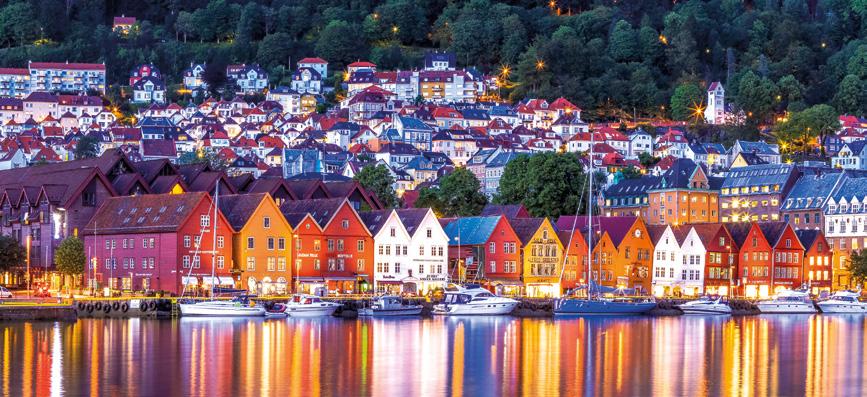
When my mother was in her earlyseventies, she began to need a rest if she was standing or walking too long. If we were out and about on one of our shopping expeditions in Dublin, she’d say: ‘Oh, I need to sit down and take the weight off my feet!’ With the youthful arrogance of the 40 year old daughter, I’d reply: ‘You’re grand. We’ll go and have a cup of tea in Arnotts’.
There was never anywhere to sit in Henry Street, so we’d have to detour into a shop and ask for a chair. This was in the days when she wouldn’t be seen dead using a walking frame, and long before I started bringing a wheelchair with us everywhere we went.
Chemists were always the best bet. Indeed, to this day they still provide a chair for their customers to sit on while they wait for their prescription to be filled. If we were in Clery’s in O’Connell Street, a helpful shop assistant would always oblige, even if it was only to give us a small step ladder or stool. Better still, if we were anywhere near the furniture section, we’d settle ourselves down on the easy chairs and couches until my mother felt able to get going again. But there were never any seats provided for customers, other than those in the restaurant or café, where you had to pay for the privilege of sitting down.

And in that thirty year span, nothing has changed! There are still no seats to be had in Dublin’s main outdoor shopping areas. Shopping Centres, it must be said, are more enlightened and do provide good, if minimal, seating.
All this came into sharp focus on my recent (post Covid) visit to Bergen in Norway to visit my grandchildren. Between my last visit and this one, I needed to sit down more than I had before. I found myself mimicking my mother’s actions all those years ago and looking around me for a seat when we were out and about. But, unlike Ireland, there are seats everywhere in Norway. In shopping
Unlike Ireland, there are seats everywhere in Norway: In shopping areas, along pavements, on street corners, under trees..

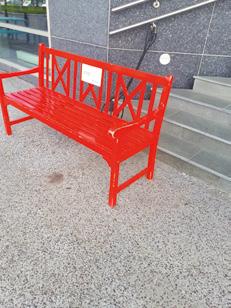
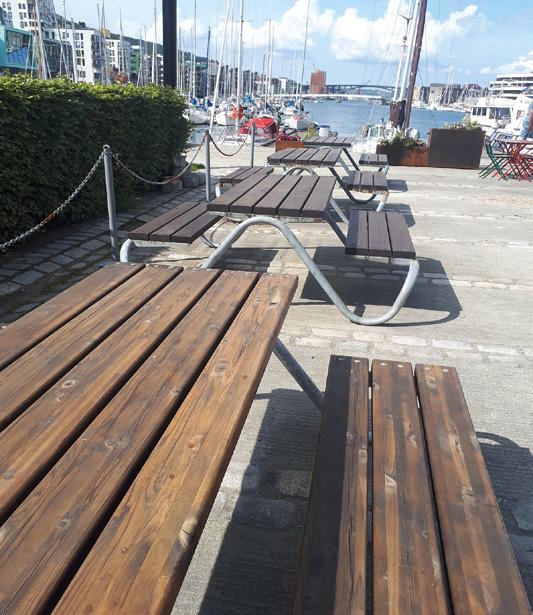
areas, along pavements, on street corners, under trees. And all of them are in use, not just by people of my age, but by all ages, particularly young parents with babies in buggies. There are, believe it or not, picnic benches outside office and civic buildings where workers gather at their breaks. There are colourful seats squeezed between buildings. Every spare piece of ground seems to have a seat, sometimes surrounded by flowers. There is a wonderful south facing tiered seating area in Oslo overlooking the waterfront. It is favoured by the young where they gather at weekends to soak in the sunshine in the company of their friends.
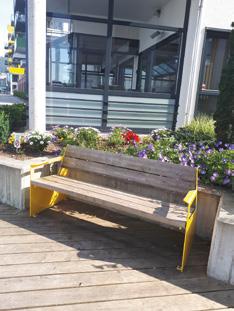
I did a little research into outdoor seating in my native Dublin city, and what I learnt in a nutshell was: if there are no financial benefits to providing seating in an outdoor retail setting, then there won’t be any. Yes, there are plenty of seats in St. Stephen’s Green, but there are none at all in Grafton Street. If my mother was still with us today and she and I were journeying from Grafton Street down to Henry Street, we’d have to detour into the Seamus Heaney exhibition in the Bank of Ireland to find a place to sit. One would have to be a moral philosopher or an economist to discover why the Norwegians thinking on this is so different to ours.
It seems the powers that be in Ireland are only interested in consumers. They are not interested in the father or mother who wants to feed their one year old baby in a quiet place on a street bench. Similarly, they don’t want older people clogging up their shopping streets, sitting on seats and chatting with their friends. Retail outlets don’t want you sitting down. They want you on your feet spending. And if you must sit down, they don’t want you on a park bench or happy under a tree with your packed lunch.

No, they want you in sandwich bars and coffee shops, buying their products. My local football park, unbelievably, removed all its seats ten years ago and never replaced them. When I asked why, they said because it ‘encouraged anti-social behaviour’. We Dubliners might say the same about the River Liffey boardwalk.
But the difference is this: The Norwegians, to counter this problem, provided more seats, not less. They don’t take them all away if there’s a problem. They put more of them in place, so that everyone has a place to sit. Now, there’s a novel way of thinking. Would that our Dublin City Council could be so enlightened?










